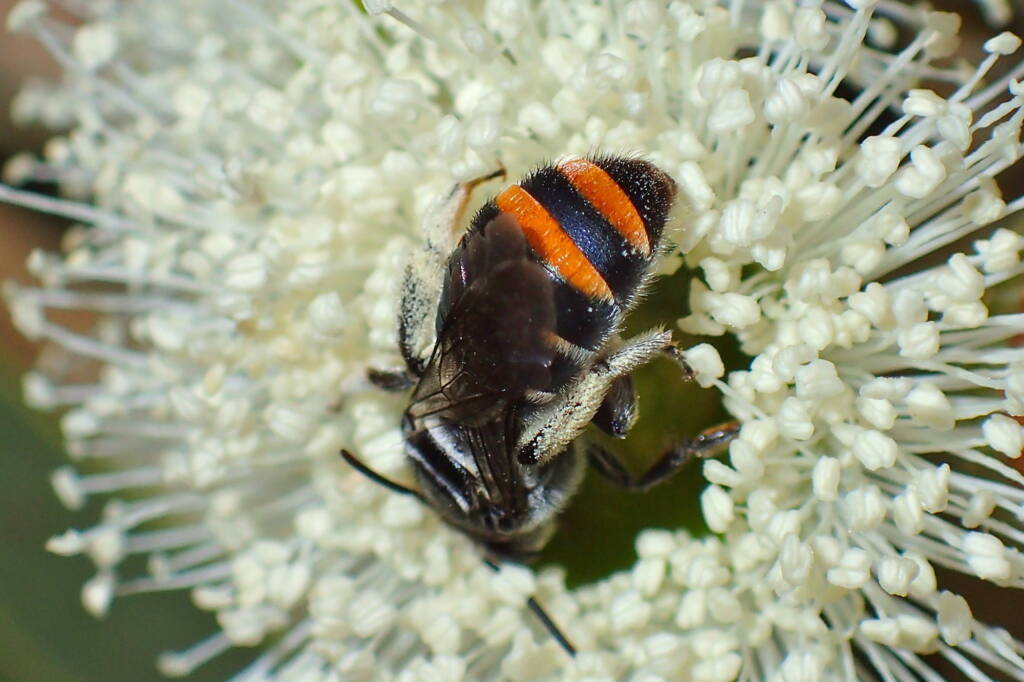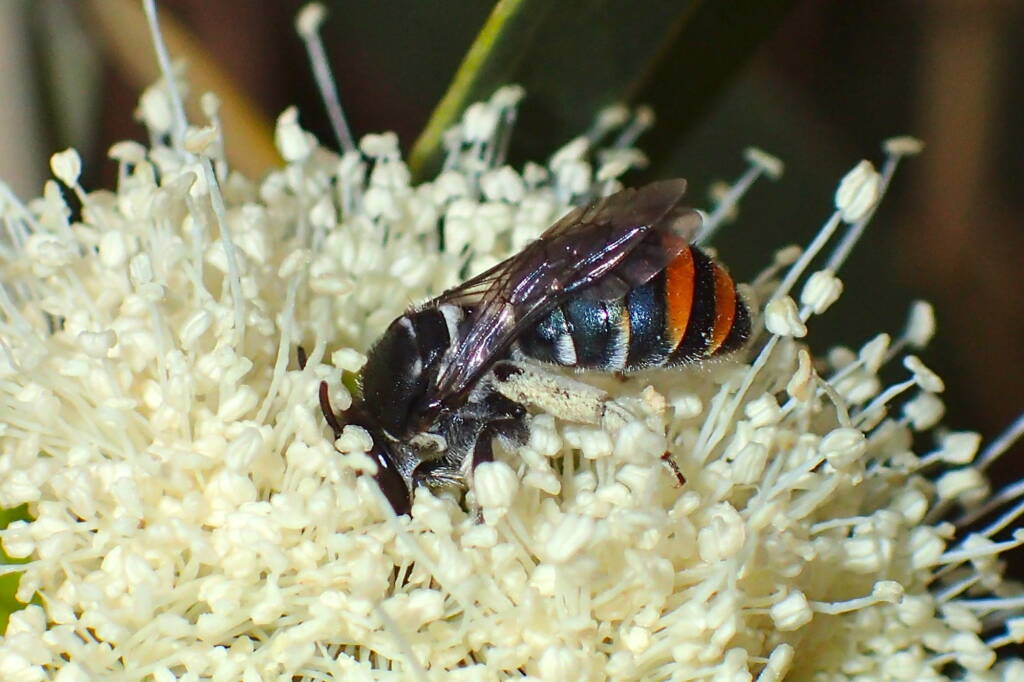Author Gary Taylor ◦
Lipotriches (Austranomia) australica, another one of my favourites that I reckon doesn’t get the “airtime” that she deserves. You’ll often see posts of male Lipotriches, fairly drably dressed in faded flannel compared the girls, and all they do (when they’re not chasing chicks) is hang out together at the local stick, no doubt bragging about their conquests…
But this girl, like the Blue banded bees (Amegilla) is in the exclusive “buzz pollinator” club. And I should point out that this girl was in shadow when I took these pics… when the sunlight hits those black bands at the right angle they turn an incredible deep metallic blue and she makes the Blue-banded bees look utterly plain…

But what’s “buzz pollination” and where do “poricidal anthers ” come in?

Well, to put it simply, there’s a lot of bugs out there that feed on pollen but all they do is eat it, they don’t actually help much with the pollination process. Some plants got a bit fed up with being “robbed” so instead of producing their pollen where it was freely accessible to anyone, they developed sac like structures around their pollen that had small openings or pores (hence the name “poricidal anthers”), that were too small to let bugs in but big enough to let the pollen out… provided it was shaken at the right frequency… and that is something only some of our native bees (that would have evolved alongside those plants hundreds of millions of years ago) can do and why they are so important to our unique Aussie ecosystem.

